Results 1 to 10 of 23
Thread: Fake washita stones.
Hybrid View
-
02-16-2016, 03:59 AM #1Senior Member

- Join Date
- Sep 2015
- Posts
- 695
Thanked: 77
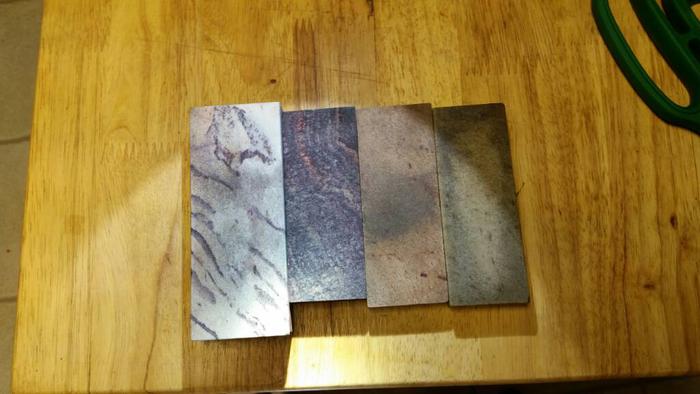 so all of these stones are marked Washita stones with brands from (right to left) smith's, buck, hand written note, world's finest sharpening stones. So after everything I've been taught the Smits is for shure a soft arkansas and I figured that the others where the same but I wasn't sure (except for the world's finest sharpening stones washita)
so all of these stones are marked Washita stones with brands from (right to left) smith's, buck, hand written note, world's finest sharpening stones. So after everything I've been taught the Smits is for shure a soft arkansas and I figured that the others where the same but I wasn't sure (except for the world's finest sharpening stones washita)
-
02-16-2016, 04:11 AM #2Senior Member

- Join Date
- Sep 2013
- Location
- NW Indiana
- Posts
- 1,060
Thanked: 246
The two on the right look like possible candidates to me. The other two I agree don't look like (original, real) Washitas. Many places these days apparently are using whatever they can find of lower density novaculite and calling it Washita, from what I've seen others say that have had old Washita and new. The new stuff I have heard people say it's crumbly and friable - my old vintage Washita stone shows a little of this behavior but not a whole lot - mostly only on very narrow items like ¼" wide chisels.
However, the only set definition is the density (specific gravity) - so if it's novaculite and it is of the proper density, who's to say. I have seen mention of the older stones hardening after drying out, so maybe they used to be like the new ones sold today. No way to know for sure.
-
02-16-2016, 04:21 AM #3

On ebay right now there are listings with stones marked 'washita' that correspond to each one you have there and I don't think the sellers are mistaken. I have had them that looked just like the second from the left when brand new. Whether a Buck or a Smith's I don't recall (I've had both brands) and I'm pretty sure the Buck was probably a rebranded Smith. Talking 40 years ago or better.
Here are some vintage Pike/Norton. The very bottom one is a lily white washita, and it ain't white. The next up is a soft arkansas and it is about white. I've had them that were sure enough white as snow years ago. (Buck or Smith). Above that the 'hard' are translucent, and black. Note that the boxes have the same label .... Hard Arkansas. From Norton's point of view I guess they were the same.
Like any stone call it what they want, it either is a good hone or it ain't. For Washita, and soft Ark I never used them on anything but pocket knives, and they were darn good for those. The hard Arks are for knives if I want to 'gild the lilly' or for razors if I want that kind of feel to the shave. Not saying that is the only way, but it is my way.
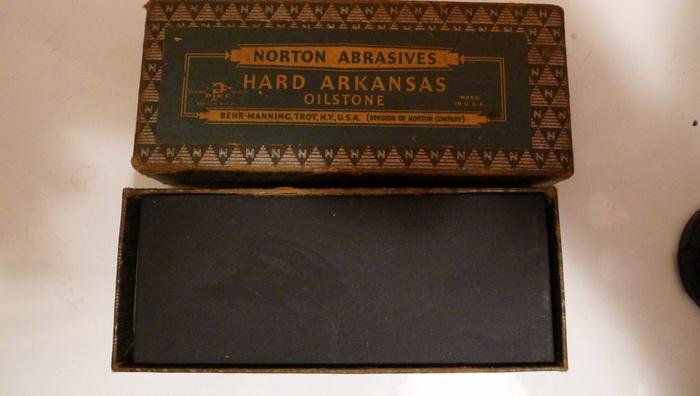
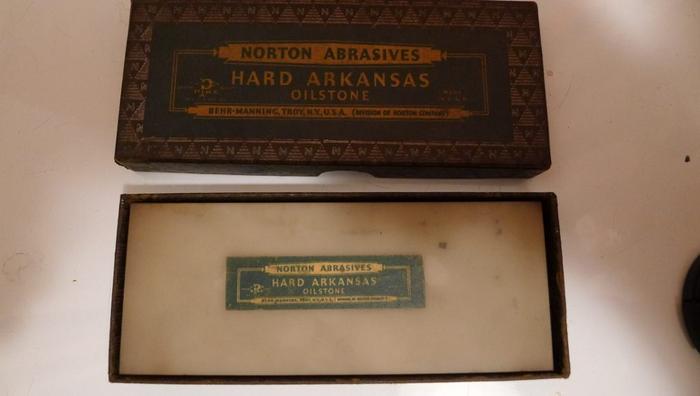
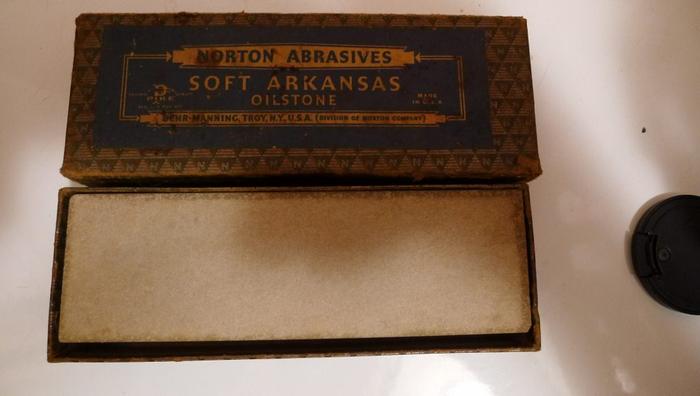
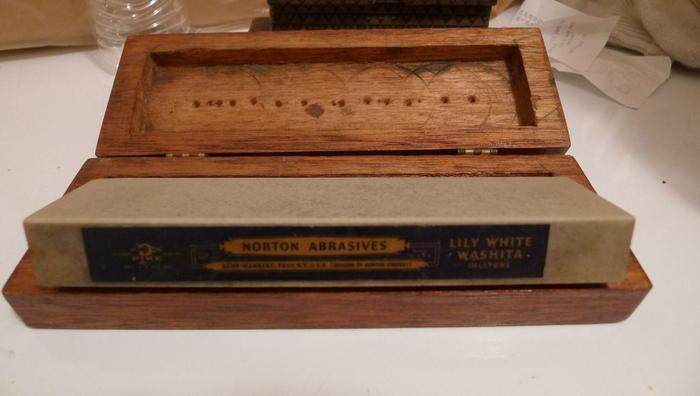 Be careful how you treat people on your way up, you may meet them again on your way back down.
Be careful how you treat people on your way up, you may meet them again on your way back down.
-
The Following User Says Thank You to JimmyHAD For This Useful Post:
Euclid440 (02-16-2016)
-
02-16-2016, 04:44 AM #4Senior Member

- Join Date
- Sep 2013
- Location
- NW Indiana
- Posts
- 1,060
Thanked: 246
Here are some more Washitas. The Lily White is very close to original, clean color. The rest were exactly the same shade of white after they were cleaned, until more of the old rancid oil from deep in the interior seeped out.
The one under the Lily White is a Norton #1 Washita, and the one that looks half white and half rust/orange is depicted again in the last photo - you can see that the bottom is still white - this stone is stored upside down in oil, so it all settled/seeped to the other side after cleaning. The discolored stones need another trip to the tank, eventually they will stay white.
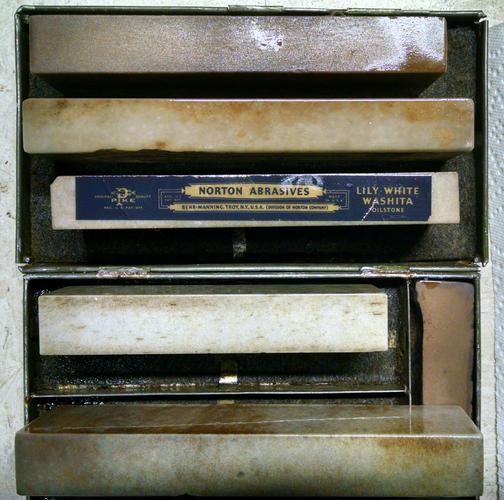
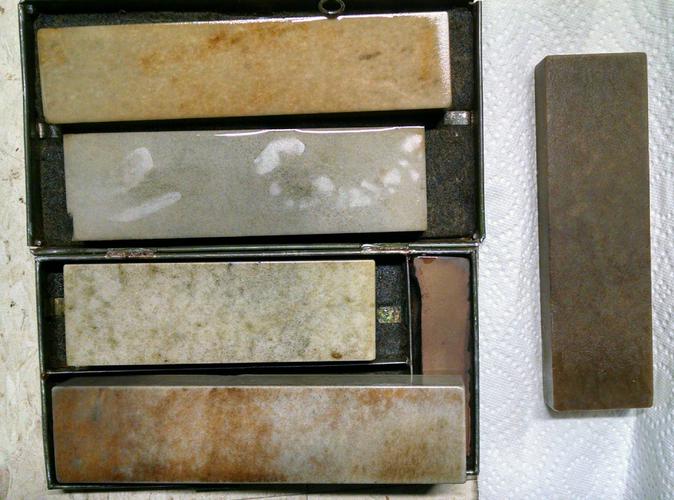
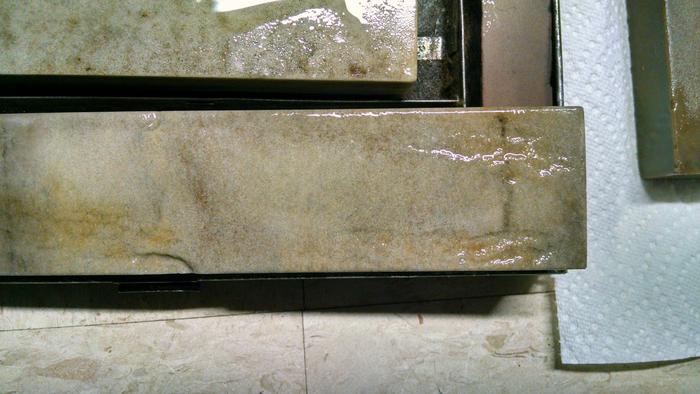
Last edited by eKretz; 02-16-2016 at 04:47 AM.
-
02-16-2016, 04:50 AM #5Senior Member

- Join Date
- Sep 2013
- Location
- NW Indiana
- Posts
- 1,060
Thanked: 246
I find these stones most useful for chisels personally, as they tend to lose their bite pretty rapidly on harder steel. Although this can be beneficial if you want a better finish it really slows down the cutting speed.
-
02-16-2016, 06:25 AM #6

The descriptions "Washita" and "soft Arkansas" can be interchangeably used. I believe it has to do with the Arkansas geological ranking at the state governmental level. This has changed over the past 100 years, as has the "hard Arkansas" ranking, which now more or less applies to the upper echelon of soft Arks, rather than translucents. Still, the range of the old Washitas can be pretty broad; I've seen vintage stones labelled as "Washita" that are dead ringers for the current crop of soft Arkansas stones, and I've used vintage lily whites bordering on translucents in terms of feel.
Last edited by Brontosaurus; 02-16-2016 at 03:05 PM.
Striving to be brief, I become obscure. --Horace
-
02-16-2016, 05:51 PM #7Senior Member



- Join Date
- Apr 2012
- Location
- Diamond Bar, CA
- Posts
- 6,553
Thanked: 3215
The two on the right look like they could use a good cleaning, cutting will improve once cleaned and lapped if needed.
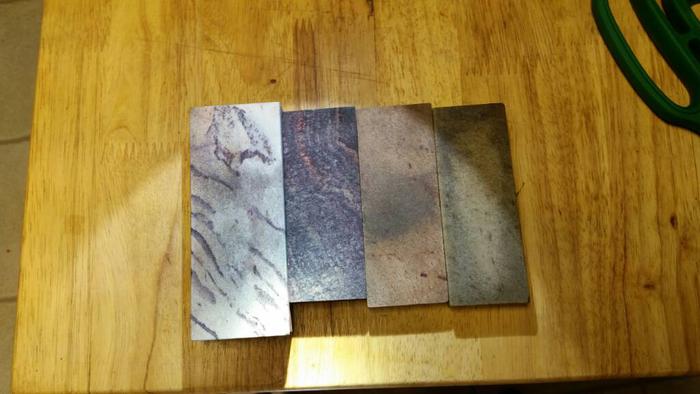
-
02-16-2016, 06:43 PM #8Senior Member

- Join Date
- May 2013
- Posts
- 143
Thanked: 32
Here's two NOS washitas for color reference. The Lily white is pure white throughout while the Number 1 washita has some blueish spots. Both stones are semi translucent and have a high ring when tapped with a metal object. (Higher than the labeled Norton soft arks that I have here).
I've only used one of the red, marbled buck type "washitas" and it was more on par with a soft ark IMO
-
02-16-2016, 07:42 PM #9Senior Member



- Join Date
- Dec 2014
- Location
- Virginia, USA
- Posts
- 2,224
Thanked: 481
I'm inclined to agree with Jimmy, and the pages from Dan's Whetstones. They're not just a sales outfit, they own the mines that these rocks come from. Don't get too caught up on color. Novaculite has a variety, and it has the same effect on the hone's performance as that your car's paint color has on horsepower - none. Either it cuts like a Washita or it doesn't. Unless you have a way to test specific gravity, the only way to know for sure is to use them.
-
02-16-2016, 07:53 PM #10Senior Member

- Join Date
- May 2013
- Posts
- 143
Thanked: 32
I don't think Dans owns a washita mine, but I could be wrong.


 22Likes
22Likes LinkBack URL
LinkBack URL About LinkBacks
About LinkBacks






 Reply With Quote
Reply With Quote

